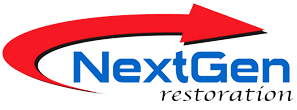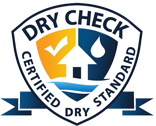

If you have mold, you need trained certified mold experts you can trust!
Properly performing mold removal and remediation must be done someone that is highly trained. Containment and air control, with the ability to eliminate loose particulate from entering in other rooms or your central air system is the difference from keeping your entire home safe, or cross contaminating the structure and making the issue worse.
- Mold Inspections
- Air Quality & Mold Testing
- Mold Removal & Clean up
- Mold Remediation
- Reconstruction & Repairs
- Advanced Moisture Control
- Structural Drying Experts
- Residential & Commercial

Mold Inspection
A visual inspection determines if advanced mold tests are required. Mold must have moisture to grow so first step is determining if there is a current water leak, or if areas are still wet and need to be dried to prevent mold growth. A site evaluation will be needed.
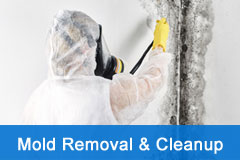
Mold Removal
If mold is caught early you can prevent further damage but action needs to be taken quickly to mitigation the situation. Our certified techs will go to work quickly to clean up the affected areas and work to keep the mold spores from becoming airborne.
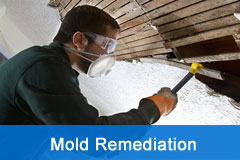
Mold Remediation
Mold remediation is removing the materials that have been damaged by mold and need to be replaced. Most often this can be carpet, padding, wood flooring, drywall or cabinets. Our goal is to restore your home to pre-loss condition as quickly as possible.
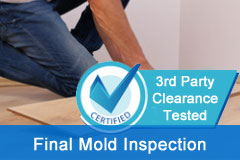
Mold Clearance
We provide independent, third party documented Mold Clearance Testing, also know as a Post Remediation Verification (PRV) at the end of every job. This step gives you peace of mind and ensures the mold removal was successful and complete.
Effective Mold Removal and Remediation Steps
The only effective way to treat mold is through source removal. We will provide a mold assessment, documenting the areas affected along with a complete remediation plan outlining the scope of work to be performed with costs.
All work is performed by highly trained technicians experienced in mold removal and remediation and includes many of the following steps:
- Set up containment barrier with negative air pressure to prevent mold spores from becoming airborne and spreading during the process.
- Commercial HEPA air scrubbers designed to capture tiny mold spores already in the air, along with HEPA Vacuums to capture mold particles on surfaces.
- Remove affected building materials that cannot be salvaged and discard them properly.
- Thoroughly clean mold from any surfaces that will not be replaced during the process.
- Antimicrobial wipe down of contaminated areas with hospital-grade cleaning agents to kill mold growth.
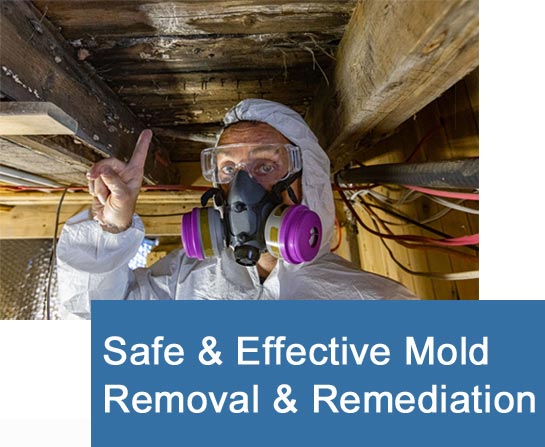
There are chemicals, cleaners, fogs and sprays that promise to rid your home of mold. Learn why these products are considered ineffective and what the EPA states about proper mold remediation.
Accurate Moisture Mapping, Prevent Mold From Returning
Whether you’ve had water damage that caused mold or just started noticing it, moisture tests are important part of mold remediation.
Our D.A.M.P. (Deep Assembly Moisture Profiling) is advanced technology that utilizes small penetrating electronic sensors designed to detect moisture even inside the wall cavity.
Many water damage and mold remediation companies still solely rely on inadequate non-penetrating moisture meters and infrared cameras that can only read the surface and partially into the drywall.
Our technology can provide the assurance the moisture issues have been fixed.
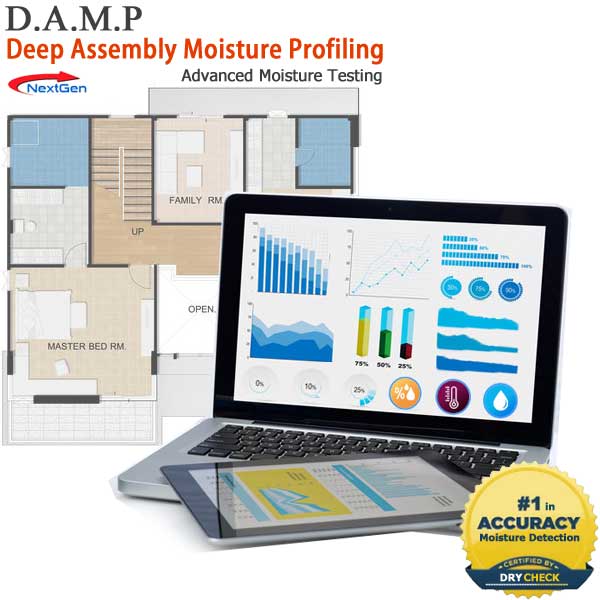
Insurance Claim? You'll Love our Professional Documentation
Everyone knows when it comes to submitting claims you need accurate documentation. Our smart sensors coupled with our advanced method of documenting each project gives you in-depth reports you can rely on. We know that expediting claims is important for everyone!
Highly Accurate Penetrating Moisture Sensors
Our electronic sensors are more accurate, detecting moisture at 3½”. Competitors use non-penetrating meters that test surface and ½”
Automated Software Data Collection & Documentation
Automatic wireless sensors collect moisture related data 24/7 and software documents the readings during the drying process.
Real Time Remote Job Monitoring 24/7
Our wireless sensors allow us to monitor equipment and conditions 24/7. Remote login for client & adjuster to see drying progress.
Third-Party Validated Data Stored in the Cloud
All documentation and data collected is transmitted to a third-party secure cloud, ensuring data integrity and a clear chain of custody.
Professional Comprehensive Reports
Our software collects the project's complex technical data, organizes it and creates reports that are easy to read and understand.
Insurance Ready - Fraud Proof Reports
Human error, data tampering and fraud is a common problem in the industry. Our system eliminates human error and is fraud proof.
Join Our List of Happy Customers!
Our reputation speaks for itself, we stand behind our customers so they get the job they deserve!
Common Questions about Mold
Because every mold remediation job is different, our experts need to talk with you and get an idea of how large of an area might be affected and what caused the mold initially. Once we learn a little more about the situation, you can order a mold inspection if needed. We can even provide a comprehensive estimate and work plan for an additional fee, which will be applied to the project if NextGen’s services are utilized.
You won’t need testing to prove you have mold, but you need testing to confirm where the mold has spread, and what it has affected so a detailed scope of work can be written that includes not only all the damage to the building, but also the contents.
If you can smell mold it is actively reproducing and it’s time to get a professional on the project. Often times paint and other materials will mask the presence of mold, this is when sampling becomes necessary. Sampling can also determine the type of mold that is present.
If you’ve recently had water damage and were told it was dry, but now you it smells musty, chances are your assemblies and material are still wet. It takes on average 7 to 15 days to dry most structures. We specialize in this type of mold issues.
There are chemicals, cleaners, fogs and sprays that promise to rid your home of mold. The Institute of Inspection Cleaning and Restoration Certification (IICRC) produces and maintains a consensus-based standard and the Environmental Protection Agency (EPA) wrote a remediation guideline. The IICRC states that vapor based antimicrobials have not been shown to be able to effectively and safely be used for mold remediation.
There are many different types of mold. Some aren’t dangerous, while others lead to chronic and severe health conditions. Stachybotrys for example, is also called “toxic mold” because it produces mycotoxins that cause severe health problems.
If you think you have mold the first sign is a musty odor, peeling or bulging paint, gray, green or black patches and is often seen on ceilings, walls, or flooring. Mold usually grows in places such as under the carpet, behind walls, in attics and even in the bathroom.
Bleach won’t kill mold, it can only make it unable to reproduce. It leaves behind all the toxic components behind that can be inhaled and affect your health. Never use bleach on wood, carpet, drywall, etc., in an attempt to kill mold, you can cause additional damage.
Consult with one of our Mold Removal Experts
You can consult directly with a mold removal and remediation specialist by phone.
Don’t go it alone, a free phone call can provide you with invaluable information!
